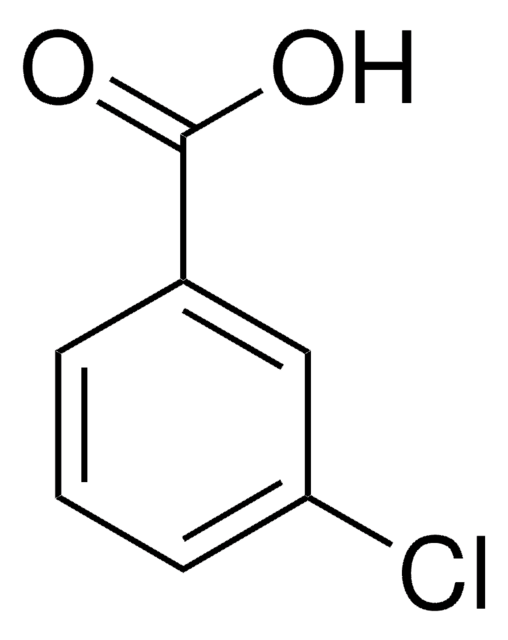C46403
3-Chloro-1-propanol
98%
Synonym(s):
1-Chloro-3-hydroxypropane, Trimethylene chlorohydrin
About This Item
Recommended Products
Assay
98%
form
liquid
refractive index
n20/D 1.445 (lit.)
bp
160-162 °C (lit.)
density
1.131 g/mL at 25 °C (lit.)
SMILES string
OCCCCl
InChI
1S/C3H7ClO/c4-2-1-3-5/h5H,1-3H2
InChI key
LAMUXTNQCICZQX-UHFFFAOYSA-N
Looking for similar products? Visit Product Comparison Guide
Related Categories
Application
- Improved Synthesis of Pheromone Components: 3-chloro-1-propanol is used as a linchpin to connect the two synthetic blocks in the synthesis of 6,14-dimethyl-1-octadecene. It is likely used as a reactant in a chemical reaction to facilitate the coupling of the two synthetic blocks, enabling the formation of the desired compound (Taguri et al., 2010).
Signal Word
Warning
Hazard Statements
Precautionary Statements
Hazard Classifications
Eye Irrit. 2 - Skin Irrit. 2 - STOT SE 3
Target Organs
Respiratory system
Storage Class Code
6.1C - Combustible acute toxic Cat.3 / toxic compounds or compounds which causing chronic effects
WGK
WGK 3
Flash Point(F)
167.0 °F - closed cup
Flash Point(C)
75 °C - closed cup
Personal Protective Equipment
Regulatory Listings
Regulatory Listings are mainly provided for chemical products. Only limited information can be provided here for non-chemical products. No entry means none of the components are listed. It is the user’s obligation to ensure the safe and legal use of the product.
FSL
Group 4: Flammable liquids
Type 3 petroleums
Hazardous rank III
Water insoluble liquid
JAN Code
C46403-BULK:
C46403-500ML:
C46403-100G:
C46403-5KG:
C46403-VAR:
C46403-25G:
C46403-500G:
Choose from one of the most recent versions:
Already Own This Product?
Find documentation for the products that you have recently purchased in the Document Library.
Customers Also Viewed
Our team of scientists has experience in all areas of research including Life Science, Material Science, Chemical Synthesis, Chromatography, Analytical and many others.
Contact Technical Service












